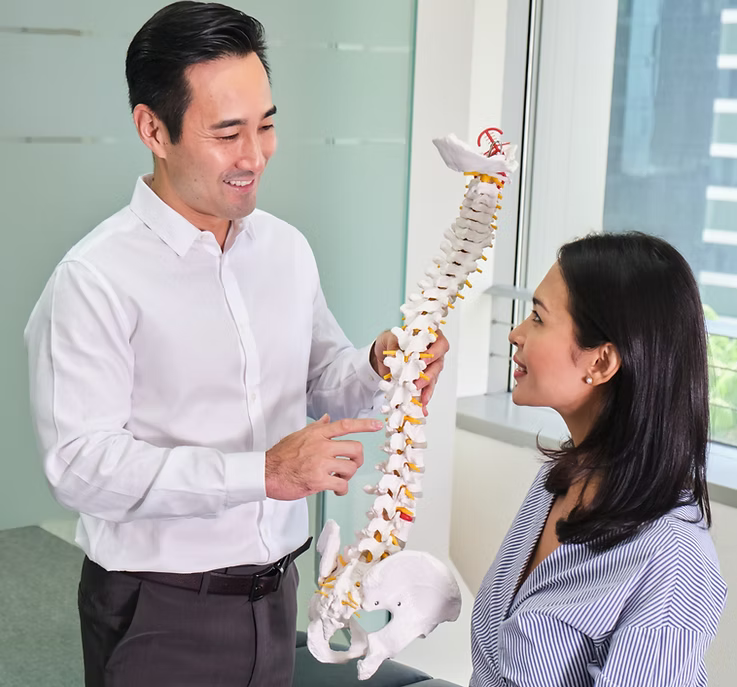Scoliosis is a spinal deformity that presents as the spine having lateral curvature in non- neutral position. This however can vary from a mild case to severe where some people have pain, less mobility and cosmetic concerns. With a few treatments available, so many ask: Can chiropractor fix scoliosis?
Here we are in this article to unfold the treatment for scoliosis, how exactly chiropractic care is applied and its pros and cons so that if you would like to go the same way as us.
What is Scoliosis?
Scoliosis can result from many causes, including:
Idiopathic Scoliosis : The most prevalent form (no clear reason)
Congenital Scoliosis: Developing from an abnormality in the structure of spine at birth.
Neuromuscular Scoliosis: Due to such conditions such as cerebral palsy or muscular astrophysics
Scoliosis (Degenerative): Most common in adults due to degeneration and wear and tear of the spine
Symptoms of the disease differ but may be manifested by uneven shoulders, back curvature evident in the very least, and pain or shortness of breath in more serious cases.
Chiropractic Care Explanation
Chiropractic care centers on alignment of the spine and nervous system health Generally, a chiropractor uses non-invasive, hands-on therapy such as spinal manipulation to enhance spinal health, decrease pain and for overall well being.
Chiropractic care is for people with scoliosis to:
- Alleviate discomfort and pain
- Enhance range of motion and suppleness.
- Contract the improvement or maintain its severity of the deformity.
Chiropractic Management of Scoliosis
1. Pain Relief
The same posture and alignment that are distorted due to scoliosis will make pain worse and Chiropractic checks on to help relieve that tension.
2. Improved Mobility
Chiropractic helps with this by improving the mobility and function of your joints, corrects any muscle imbalances. This is especially beneficial for people who tend to be stiff due to their scoliosis.
3. Postural Improvement
As scoliosis is so often associated with posture, scoliosis doctors are good at manipulating and exercising postural muscles to reduce the visual impact of scoliosis (i.e.: Chiropractor)
4. Prevent
Chiropractic treatment will not correct the curve in your spine, but may slow progression of that curvature when used in conjunction with other treatments (ex. bracing, physical therapy)
5. Holistic Support
This includes things such as exercise prescription and ergonomic/auditory modifications that the chiropractor aims to help with in addition to your in-office care. That is, individuals are managing their scoliosis in an integrated fashion.
Overview of a Chiropractic Treatment
Initial Evaluation
Scoliosis – This is when a chiropractor will do an extensive evaluation, medical history, physical examination and imaging studies such as X-rays to find out how deep the scoliosis is.
DIY Chiropractic
One of the reasons why scoliosis can be tricky because not every case is the same — your thru-the-spine cooker will pelt you with a different plan made specifically for your individual proportions, mostly centered around pain reduction and functional improvement.
Consistent Adjustments
Chiropractic adjustments are the expert spine manipulation to reduce misalignment and improve range of motion. These treatments are usually spaced over a number weeks/months.
Complementary therapies
- Besides Adjustments, Chiros may also put you on:
- Stretching and strengthening
- Get a Massage to relax your muscles.
- Support for all aspects of health through nutritional advice
Chiropractic care has limitations
Important to note is that chiropractic is not a treatment on its own for severe scoliosis. When more severe cases require a team, including:
- Bracing for adolescents to stop the curve from becoming worse.
- Surgical intervention for significant deformities resulting in functional limitations:
- Comprehensive rehabilitation by physical therapy.
Is Chiropractic Care Right for You?
For the individual with mild-moderate scoliosis, looking for relief from pain and improved function that conservative care such as Chiropractic has to offer. You will need to see a good chiropractor, who may also combine his skills with other domain professionals to provide full coverage.
Conclusion
A chiropractor can’t “treat” your scoliosis, but they can help in what they do so well, managing symptoms and alleviating pain with or without moving the spine. For best results, chiropractic is to be used with other treatments and must be individuality intended.



